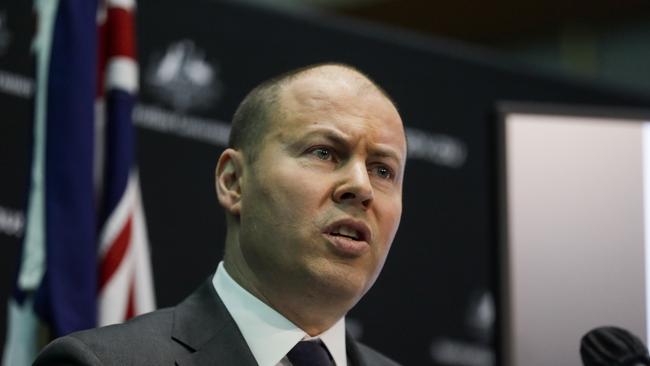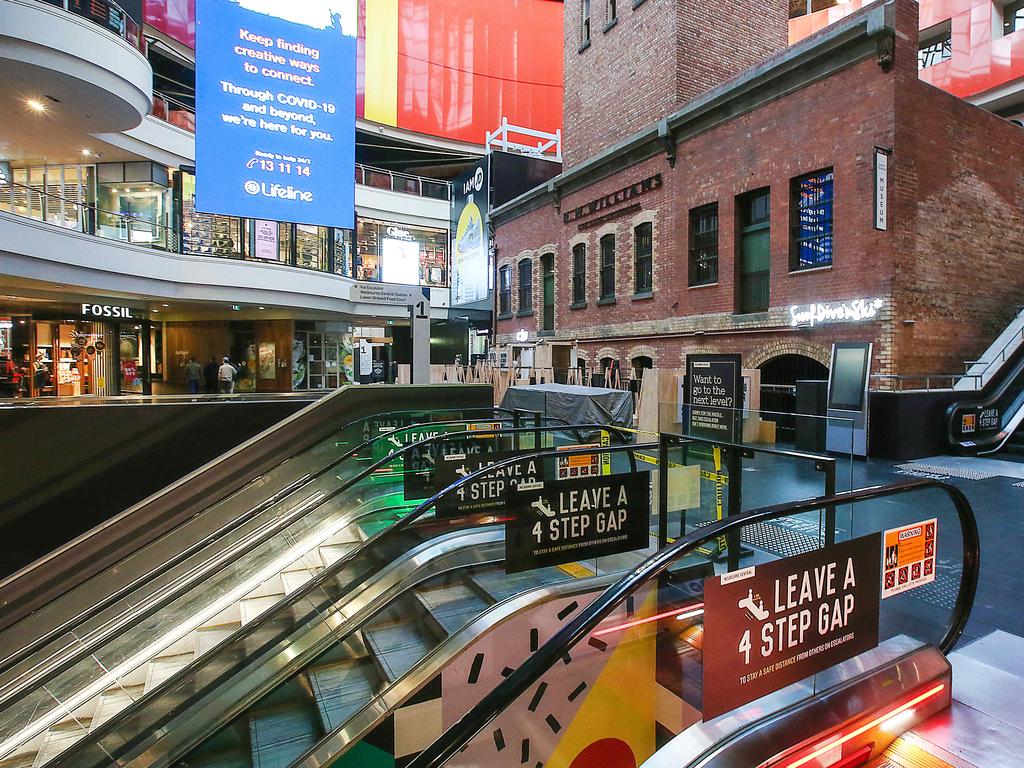Businesses survive on $52bn lifeline
The $52bn spend by federal and state governments on COVID-19 subsidies in the June quarter kept Australian businesses afloat.

The $52bn spend by federal and state governments on COVID-19 subsidies in the June quarter kept Australian businesses afloat amid record plunges in inventories across the retail, trade and manufacturing sectors.
The JobKeeper and Boosting Cash Flow coronavirus packages – the largest subsidies ever recorded in the national accounts – were dominated by businesses in the construction, professional services, tourism, hospitality and healthcare sectors.
As consumer and business confidence sunk to historic lows, private sector investment fell 6.5 per cent between April and June as companies halted spending.
Josh Frydenberg said falls in business investment were concentrated in the non-mining sector, with mining investment rising by 1.3 per cent, its third consecutive quarterly rise.
The Treasurer said strong mining results in Queensland and Western Australia had helped keep the economy going through the pandemic.
“It is a highly productive sector. It is a big export earner. It’s a big employer,” he said.
The Australian Bureau of Statistics said the bulk of JobKeeper payments had gone to the construction, healthcare, social assistance, professional and technical services, accommodation and food sectors.
“JobKeeper payments relative to Compensation of Employees (COE) were highest in the arts and recreation services industry, accounting for 48.6 per cent of COE and the accommodation and food services industry (45 per cent),” the ABS said.
The national accounts, released on Wednesday, showed the imports of goods and services slumped 12.9 per cent in the June quarter, and 19.1 per cent across 2019-20, on the back of a 98.7 per cent fall in travel services triggered by international border closures.
The 6.7 per cent slide in exports was fuelled by a 46.6 per cent contraction in transportation services and 8.3 per cent drop in coal.
Mr Frydenberg said COVID-19 restrictions had “significantly impacted the tourism and international education sectors”. “Travel-related trade has almost totally ceased, resulting in sharp falls in both exports and imports,” he said. “Be it the tourism operator in Cairns, the tradie in Melbourne, the cafe worker in Adelaide or the domestic flight attendant in Sydney, they are all affected by COVID-19.”
Total inventories decreased $4.085bn in the June quarter, following a $1.261bn fall in the previous quarter, driven by significant declines across retail, wholesale and manufacturing sectors.
Business Council of Australia chief executive Jennifer Westacott said business investment was in “free fall” and stressed that growing the economy was needed to “allow us to pay down debt and begin replacing lost jobs and hours”.
“This isn’t just about numbers on a spreadsheet, this is about people’s jobs and livelihoods. More than a million Australians don’t have work, more don’t have the hours they need and businesses are struggling to stay afloat,” Ms Westacott said.
Australian Industry Group chief executive Innes Willox said the private sector had “borne the brunt of the downturn”.







To join the conversation, please log in. Don't have an account? Register
Join the conversation, you are commenting as Logout